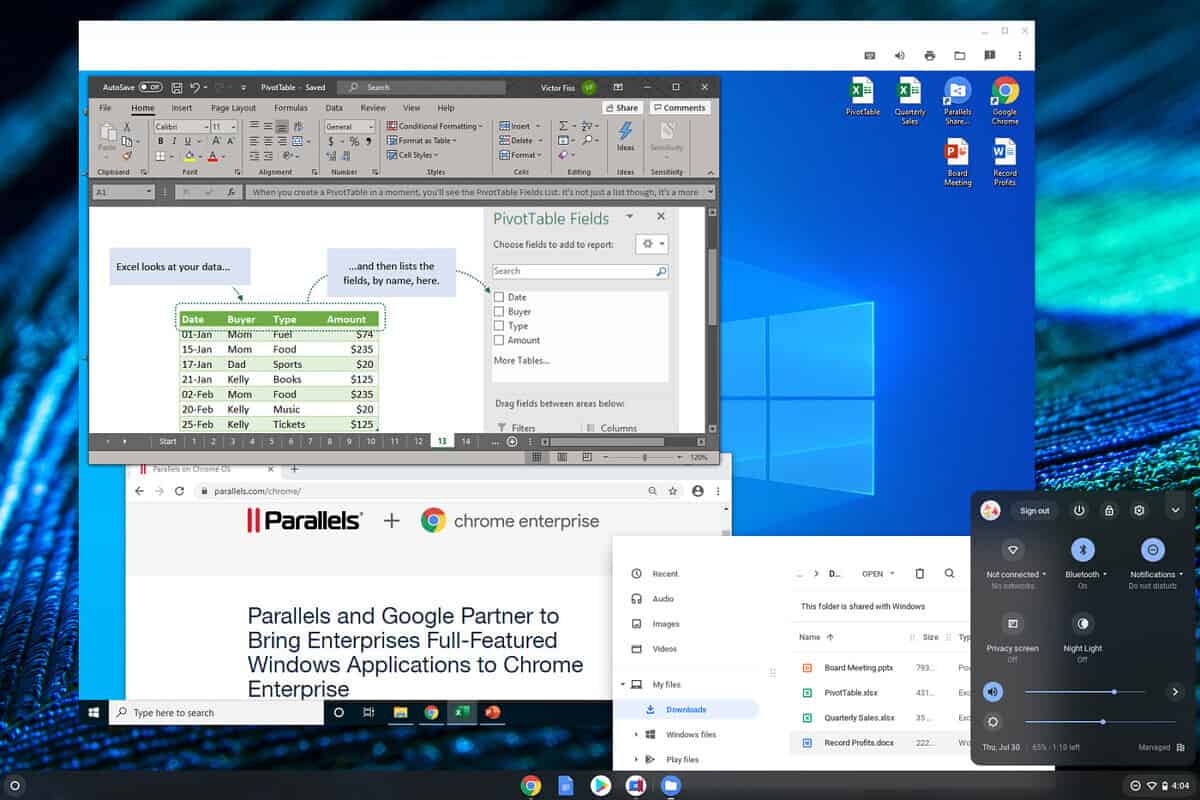Contents
- 1 Introduction
- 4 Checking VMX Support on Unofficial Hardware
- 4.2 BIOS Settings
Introduction
Yes, You read it right! VHD for all people that want to run Google’s latest innovation – The Chrome OS. (Experience free call to US and Canada visit How to use Gmail Call features outside US) I have been looking for its ISO image, or something other that can work with Virtual PC. (I am a Microsoft Technology Guy). Device Guard — Enables Hyper-V components. Guard; Containers — System-level virtualization for running multiple isolated applications. Hyper-V — Runs 64-bit virtual machines on the.
The Chromebooks with Intel processors are fast. I've replaced my Macbook Air with a Chromebook, and run the standard Chrome OS software on VT01, and virtual machines on VT02. I have booted both Windows and different versions of Linux and the 9front version of Plan 9.
I currently use a custom build of Qemu. It's a bit hard to get Qemu built in the Chrome OS build system at present, so I've got a directory containing Qemu, its libraries and BIOS files, and scripts to chroot to that directory and run Qemu. Access to devices, where needed, is provided via bind-mounts. The setup sounds a bit kludgy but works well for me; nevertheless, we welcome improvements. What we'd most prefer is to get this patch series into Chrome OS, so we have qemu as part of a 'real' build.
FWIW, this particular instance of qemu was built on arch Linux, lost, sadly, when my Air was stolen.
Background
The firmware on Chrome OS devices will clear the VMX bits during boot. This means that support is disabled, but it is not locked such that runtime cannot change things. This keeps things secure during initial boot, but doesn't lock out people from enabling things themselves in the kernel. Otherwise, they'd have to resort to modifying the firmware and that's always a tricky proposition (make a mistake and you have a brick).
When the Chrome OS kernel boots up, it will look for the disablevmx=[on|off] option on the kernel command line. If it is set to off, then VMX support will be enabled. For all other situations, we disable VMX and lock the bits so they cannot be turned back on. This keeps the system secure.
Current Chrome OS systems all ship with KVM disabled. That means you need to currently build a custom kernel yourself in order to get KVM support.
Board Specific Notes
Be aware that on earlier Chrome OS devices, the firmware contained bugs such that they locked VMX support during power on. It's known to affect:
- *Samsung Series 5 550
- *Samsung Series 3 Chromebox
For devices marked with a *, you might be able to restore support by hacking the firmware. Please see the respective device pages for more details.
Building Chromium OS w/KVM
To start, you're going to need an image that has the KVM modules. You should update your sources, then build an image with (at minimum) the USE=kvm option, viz:
USE=kvm ./build_image --board=lumpy --noenable_rootfs_verification --boot_args 'disablevmx=off lsm.module_locking=0'Googlers: I have USB sticks that you can use for this install. Come see me if you want one. Sorry, can't hand these out yet :-(
Install this image in your favorite manner, either via update engine or usb stick. Boot the stick as usual.
Enabling VMX Support
Install Chrome Os On Hyper Vpn
The magic kernel command line option is disablevmx. So you want to add disablevmx=off to the kernel command line.
Log in as root.
mount -o remount /
/usr/share/kernel/use_kvm.sh
to test:
modprobe kvm_intel
This will almost certainly get an error. There are a few more steps to make sure virtual machines can be used.
/usr/share/vboot/bin/make_dev_ssd.sh --save_config /tmp/x
Edit this config and add the line
disablevmx=off lsm.module_locking=0
to the command line. Then
/usr/share/vboot/bin/make_dev_ssd.sh --set_config /tmp/x
Then comes the interesting part. On the laptops, you have to hard-disconnect the battery. On samsung, you do this by putting a paperclip into the hole on the underside of the trackpad.
Once that's done, you're going to need to pull down two files:
https://docs.google.com/open?id=0By47TDljmWaSWEttVGNBbVUwMEU, which is the qemu and other bits.

Checking VMX Support on Unofficial Hardware
If you are trying to run Chromium OS on your own hardware (i.e. not a Chromebook/Chromebox), you should make sure your system is properly configured first.
Install Chrome Os On Hyper View
CPU Support
Make sure your CPU has support for the Intel VMX extensions. Simply look at /proc/cpuinfo to see if it has the vmx flag:

$ grep '^flagss*:.* vmx ' /proc/cpuinfo
flags : ... vmxsmx ...If you don't, then sorry, but your CPU doesn't support VMX extensions.
BIOS Settings
Most BIOSs today have an option to enable/disable VMX support at boot, and then lock any further modifications. They often times default to disabling the VMX extensions.
You can check at runtime by using the rdmsr command from the iotools package:
$ sudo modprobe msr
$ sudo iotools rdmsr 0 0x3a
0x0000000000000001Install Chrome Os On Hyper V
You only care about the lower 3 bits. An explanation of the first few bits:
| Bit | Meaning |
| 0 | Settings are locked |
| 1 | VMX Extensions |
| 2 | SMX Extensions |
Thus, if the last digit in the output is '1' (or much less unlikely, '8'), your BIOS has disabled VMX support and locked further modification. You will need to reboot into your BIOS, find the option, and enable it. Look for the word 'virtualization'.
Using kvm-ok Helper
The latest versions of QEMU/KVM include a tool called kvm-ok which is designed to perform various sanity checks on the system and see if things will work. Simply install it (note: it's often included in the 'kvm' package in your distro) and run it:



